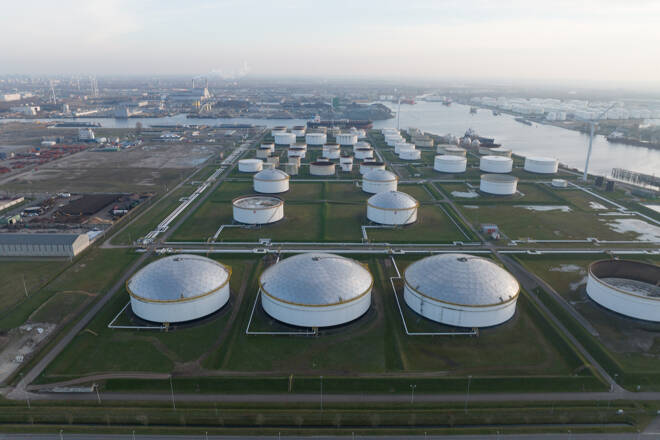Advertisement
Advertisement
Natural Gas Forecast: Bearish Tone Amid Record Output
By:
Record U.S. output and rising exports drive natural gas price volatility, despite increased demand and bearish sentiment causing falling prices.
Highlights
- Natural gas prices impacted by record U.S. output and rising exports.
- Despite increased demand, bearish sentiment keeps prices falling.
- Volatility expected due to supply-demand dynamics and weather patterns.
Overview
On Friday, natural gas is edging lower after dropping close to 5% to a three-week low the previous session. This weakness is due to record U.S. output, rising exports from Canada, and a slightly bigger-than-expected weekly storage build.
Despite record daily gas exports to Mexico and forecasts for warmer-than-expected weather over the next two weeks that should boost the amount of gas power generators are burning to produce electricity for air conditioning, prices are falling. The price action indicates that without a sustainable bullish catalyst, traders are likely to continue being in “sell the rally” mode, which is bearish for prices.
US Natural Gas Storage Surpasses Expectations
On the supply side, the U.S. Energy Information Administration reported that utilities added 110 billion cubic feet (bcf) of gas into storage during the week ended May 26, slightly exceeding analysts’ expectations. This increase in storage was larger than usual due to mild weather, which limited demand for gas in both heating and cooling. Consequently, stockpiles rose to 2.446 trillion cubic feet (tcf), representing a 16.6% surplus compared to the five-year average for this time of year.
US Gas Output Hits Record High
In terms of supply, gas output in the U.S. Lower 48 states reached a new record of 102.5 billion cubic feet per day (bcfd) in May, surpassing the previous monthly all-time high. Additionally, gas flows from Canada to the United States were expected to increase to a near four-month high of 9.7 bcfd, with exports to Mexico on track to set a new record as well. However, the decline in gas flows to the major U.S. LNG export plants during May due to maintenance activities had an impact on overall supply.
Warmer Weather to Boost Gas Demand
Looking ahead, meteorologists predict that weather in the Lower 48 states will remain mostly near normal until mid-June when it is expected to turn warmer than normal. This shift in weather patterns is likely to increase gas demand, including exports, in the coming weeks. Refinitiv forecasts indicate a rise in U.S. gas demand to 93.3 bcfd, reflecting the seasonal shift in temperatures.
Short-Term Outlook: ‘Sell the Rally’ Mode
Given the supply-demand dynamics and the potential for increased demand due to weather patterns, short-term forecasts suggest that natural gas prices may experience volatility. However, the absence of a sustainable bullish catalyst and the prevailing “sell the rally” mode among traders indicate a bearish sentiment that could continue to influence prices.
Technical Analysis
Natural gas is currently trading on the bearish side of the PIVOT at $2.190, putting it in a weak position. This level is also resistance.
A sustained move under $2.190 puts the market in the hands of strong sellers. If this continues to generate enough downside pressure, we could see an eventual test of $1.761 (S1).
Overtaking $2.190 will signal the return of buyers. If this move is able to generate enough upside momentum then look for a near-term rally into $2.465 (R1).
| S1 – $1.761 | PIVOT – $2.190 |
| S2 – $1.486 | R1 – $2.465 |
| S3 – $1.057 | R2 – $2.894 |
For a look at all of today’s economic events, check out our economic calendar.
About the Author
James Hyerczykauthor
James Hyerczyk is a U.S. based seasoned technical analyst and educator with over 40 years of experience in market analysis and trading, specializing in chart patterns and price movement. He is the author of two books on technical analysis and has a background in both futures and stock markets.
Advertisement
